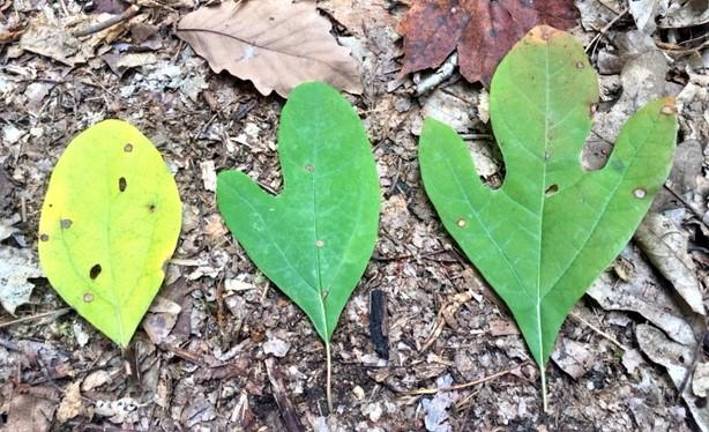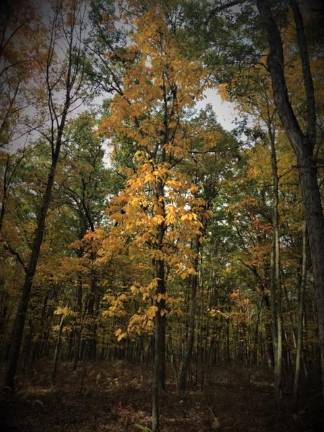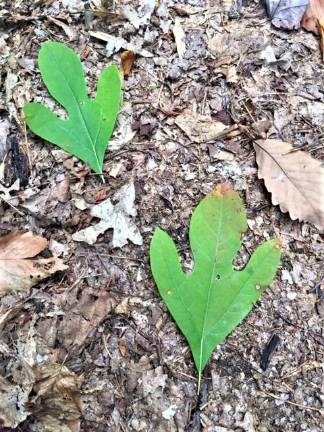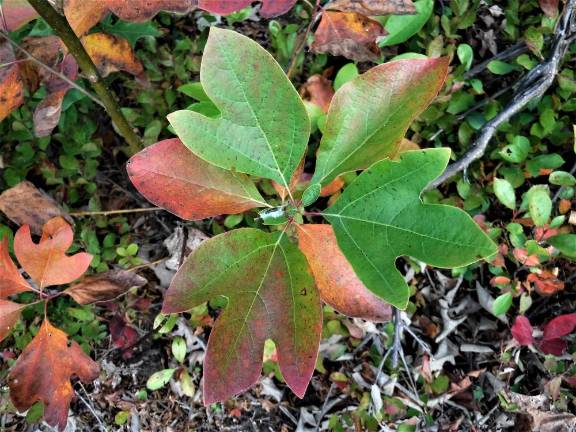The ‘root’ of root beer
But sassafras offers so much more than soda pop




The wind may be chill and the ground may be snowy, but amidst our wintery landscape is a tree steeped in sunshine. Break a twig to breathe deep its bright lemony aroma; this fragrance alone is medicine.
Sassafras (Sassasfras albidum) is typically identified by its leaves. Each tree bears leaves of three different shapes – one entire, a second shaped like a mitten, and a third that the kids say looks like a T-Rex foot. However, sassafras is still easy to spot when limbs are bare. Mature trees bear irregularly furrowed bark, gray-brown in color, and upward-bending green twig tips. Saplings sport slender green branches dotted with prominent gray lenticels. Because sassafras is clonal, mature trees are typically surrounded by numerous saplings, all connected by an underground root system.
Sassafras is probably best known as an ingredient in our first root beers. The root was simmered alongside wild sarsaparilla roots, sweetened with birch syrup and fermented. Our commercial root beers today contain no sassafras at all. But sassafras is so much more than soda pop.
The twigs of sassafras are easiest to harvest. Simply slice a pliable green twig, snap into smaller pieces, and simmer in hot water. They make a delicious, subtly spicy beverage. Sassafras root provides a richer flavor – earthier and spicier – than that of the twigs. To harvest, select a sapling – better to thin young trees than harvest a mature tree that can give rise to many more. Don gloves and take shovel to dirt, digging in a circular fashion around the sapling. Once you’ve exposed its lateral root, use your hands or, with caution, a digging knife, to unearth it. With a sharp blade, slice the sapling’s root away from the larger root. To make a root tea, simply wash, dice and simmer. Roots and/or twigs, when prepared as a beverage, warm and enliven the body, boost the immune system and aid in digestion. When leaves appear in spring, dry and pulverize them to make a traditional file powder. Do not consume the toxic blue-black fruits that appear in fall.
So, the next time you’re on a woods walk, pay mind to those slender trees with furrowed bark. Crack a green twig – does it smell like lemon? Look to the forest floor – is it speckled with mittens and T-Rex feet? If so, you’ve got sassafras.